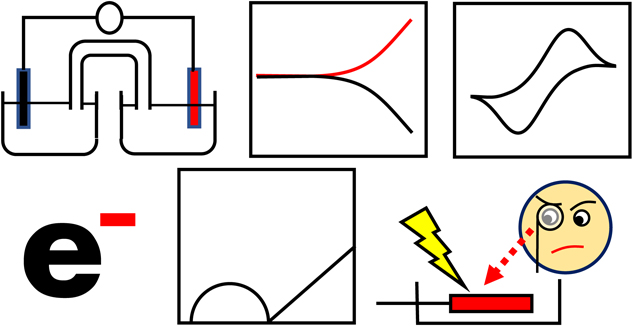90 巻, 10 号
選択された号の論文の29件中1~29を表示しています
- |<
- <
- 1
- >
- >|
Editorial
-
2022 年90 巻10 号 p. 100001
発行日: 2022/10/05
公開日: 2022/10/05
PDF形式でダウンロード (2791K) HTML形式で全画面表示
Comprehensive Paper (Invited Paper)
The Award of The Electrochemical Society of Japan (Takei Award)
-
2022 年90 巻10 号 p. 101001
発行日: 2022/10/05
公開日: 2022/10/05
[早期公開] 公開日: 2022/08/10PDF形式でダウンロード (7112K) HTML形式で全画面表示
Scientific Achievement Award of The Electrochemical Society of Japan
-
2022 年90 巻10 号 p. 101002
発行日: 2022/10/05
公開日: 2022/10/05
[早期公開] 公開日: 2022/05/28PDF形式でダウンロード (3352K) HTML形式で全画面表示 -
2022 年90 巻10 号 p. 101003
発行日: 2022/10/05
公開日: 2022/10/05
[早期公開] 公開日: 2022/07/06PDF形式でダウンロード (5526K) HTML形式で全画面表示
Young Researcher Award of The Electrochemical Society of Japan (Sano Award)
-
2022 年90 巻10 号 p. 101004
発行日: 2022/10/05
公開日: 2022/10/05
[早期公開] 公開日: 2022/07/12PDF形式でダウンロード (2768K) HTML形式で全画面表示 -
2022 年90 巻10 号 p. 101005
発行日: 2022/10/05
公開日: 2022/10/05
[早期公開] 公開日: 2022/07/15PDF形式でダウンロード (2048K) HTML形式で全画面表示
Young Researcher Award of The Electrochemical Society of Japan (Sano Award), 2019
-
2022 年90 巻10 号 p. 101006
発行日: 2022/10/29
公開日: 2022/10/29
[早期公開] 公開日: 2022/10/04PDF形式でダウンロード (4359K) HTML形式で全画面表示
The 66th special feature “Novel Aspects and Approaches to Experimental Methods for Electrochemistry”
Editorial
-
2022 年90 巻10 号 p. 102000
発行日: 2022/10/31
公開日: 2022/10/31
PDF形式でダウンロード (2038K) HTML形式で全画面表示
Comprehensive Papers
-
2022 年90 巻10 号 p. 102001
発行日: 2022/10/31
公開日: 2022/10/31
PDF形式でダウンロード (1952K) HTML形式で全画面表示 -
2022 年90 巻10 号 p. 102002
発行日: 2022/10/31
公開日: 2022/10/31
PDF形式でダウンロード (2909K) HTML形式で全画面表示 -
2022 年90 巻10 号 p. 102003
発行日: 2022/10/31
公開日: 2022/10/31
PDF形式でダウンロード (2322K) HTML形式で全画面表示 -
2022 年90 巻10 号 p. 102004
発行日: 2022/10/31
公開日: 2022/10/31
PDF形式でダウンロード (4714K) HTML形式で全画面表示 -
2022 年90 巻10 号 p. 102005
発行日: 2022/10/31
公開日: 2022/10/31
PDF形式でダウンロード (2332K) HTML形式で全画面表示 -
2022 年90 巻10 号 p. 102006
発行日: 2022/10/31
公開日: 2022/10/31
PDF形式でダウンロード (2544K) HTML形式で全画面表示 -
2022 年90 巻10 号 p. 102007
発行日: 2022/10/31
公開日: 2022/10/31
PDF形式でダウンロード (5121K) HTML形式で全画面表示 -
2022 年90 巻10 号 p. 102008
発行日: 2022/10/31
公開日: 2022/10/31
PDF形式でダウンロード (6680K) HTML形式で全画面表示 -
2022 年90 巻10 号 p. 102009
発行日: 2022/10/31
公開日: 2022/10/31
PDF形式でダウンロード (9414K) HTML形式で全画面表示 -
2022 年90 巻10 号 p. 102010
発行日: 2022/10/31
公開日: 2022/10/31
PDF形式でダウンロード (12717K) HTML形式で全画面表示
Review
-
2022 年90 巻10 号 p. 102011
発行日: 2022/10/31
公開日: 2022/10/31
[早期公開] 公開日: 2022/10/01PDF形式でダウンロード (2758K) HTML形式で全画面表示
Articles
-
2022 年90 巻10 号 p. 103001
発行日: 2022/07/11
公開日: 2022/07/11
[早期公開] 公開日: 2022/05/13PDF形式でダウンロード (2598K) HTML形式で全画面表示 -
2022 年90 巻10 号 p. 103002
発行日: 2022/07/11
公開日: 2022/07/11
[早期公開] 公開日: 2022/05/17PDF形式でダウンロード (1675K) HTML形式で全画面表示 -
2022 年90 巻10 号 p. 103003
発行日: 2022/09/27
公開日: 2022/09/27
[早期公開] 公開日: 2022/08/19PDF形式でダウンロード (1870K) HTML形式で全画面表示 -
Chemical Equilibrium from the Viewpoint of Mixing Entropy and Some Comments on Equilibrium Constants2022 年90 巻10 号 p. 103004
発行日: 2022/10/20
公開日: 2022/10/20
[早期公開] 公開日: 2022/09/14PDF形式でダウンロード (877K) HTML形式で全画面表示 -
2022 年90 巻10 号 p. 103005
発行日: 2022/10/28
公開日: 2022/10/28
[早期公開] 公開日: 2022/09/30PDF形式でダウンロード (2126K) HTML形式で全画面表示
Regular Papers
Articles
-
2022 年90 巻10 号 p. 107001
発行日: 2022/10/20
公開日: 2022/10/20
[早期公開] 公開日: 2022/09/08PDF形式でダウンロード (2732K) HTML形式で全画面表示 -
2022 年90 巻10 号 p. 107002
発行日: 2022/10/20
公開日: 2022/10/20
[早期公開] 公開日: 2022/09/14PDF形式でダウンロード (2563K) HTML形式で全画面表示 -
2022 年90 巻10 号 p. 107003
発行日: 2022/10/20
公開日: 2022/10/20
[早期公開] 公開日: 2022/09/15PDF形式でダウンロード (2752K) HTML形式で全画面表示 -
2022 年90 巻10 号 p. 107004
発行日: 2022/10/28
公開日: 2022/10/28
[早期公開] 公開日: 2022/09/30PDF形式でダウンロード (4742K) HTML形式で全画面表示 -
2022 年90 巻10 号 p. 107005
発行日: 2022/10/28
公開日: 2022/10/28
[早期公開] 公開日: 2022/09/28PDF形式でダウンロード (4526K) HTML形式で全画面表示
- |<
- <
- 1
- >
- >|











